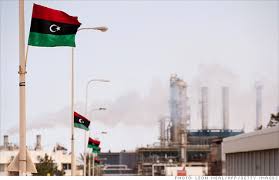The oil output of the Organization of the Petroleum Exporting Countries (OPEC) rose in July by 90.000 barrels per day (bpd) to a 2017 high. a Reuters survey found. led by a further recovery in supply from Libya. one of the countries exempt from a production-cutting deal.
A dip in supply from Saudi Arabia and lower Angolan exports helped to boost OPEC`s adherence to its supply curbs to 84 percent.
While this is up from a revised 77 percent in June. compliance in both months has fallen from levels above 90 percent earlier in the year.
The extra oil from Libya means supply by the 13 OPEC members originally part of the deal has risen far above their implied production target. Libya and Nigeria were exempt from the cuts because conflict had curbed their production.
A gain in Libyan and Nigerian output has added to the challenge the OPEC-led effort is facing to get rid of excess supply in world markets. To address this. ministers at a July 24 meeting moved to cap Nigerian output and officials are holding talks next week on improving compliance.
`There is a need to align all countries to achieve full compliance.` a source close to OPEC said of the compliance talks. which will be held on August 7 to 8 in Abu Dhabi.
As part of a deal with Russia and other non-members. the OPEC has been reducing output by about 1.2 million bpd from January 1. 2017 until March next year.
Due to OPEC highly complying with the deal. and much-reduced output in the exempt countries. supply was pushed lower earlier in the year.
But extra Libyan and Nigerian production has been prompting output to rise since May. and adherence has slipped in some other countries.
July`s biggest rise came from Libya. where output rose to an average of more than 1 million bpd.
Among countries with lower output. the biggest decline was in Angola. which exported 50 cargoes. two less than in June. Angola`s August volumes are expected to increase.
Nigeria pumped slightly less in July after an increase in June. partly due to a force majeure on Bonny crude exports. according to the survey.

 Iran Energy News Oil, Gas, Petrochemical and Energy Field Specialized Channel
Iran Energy News Oil, Gas, Petrochemical and Energy Field Specialized Channel



